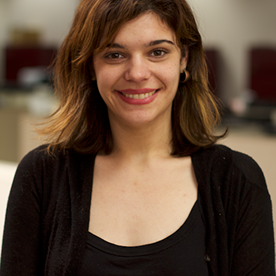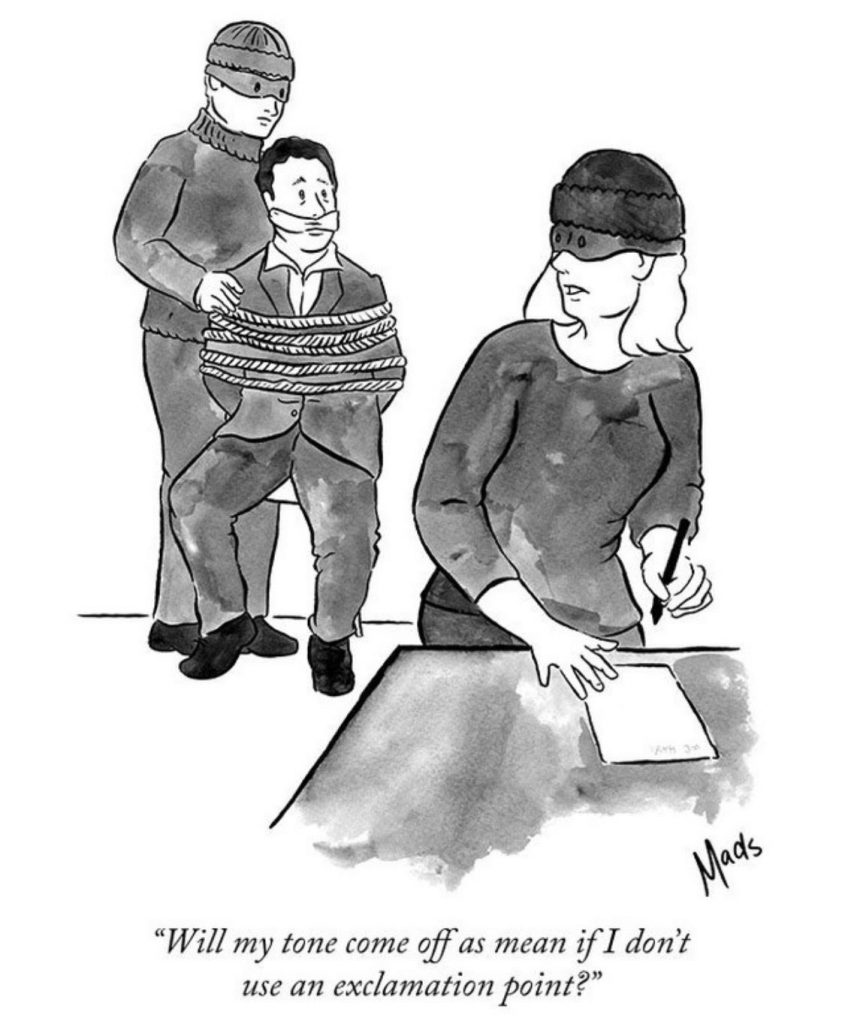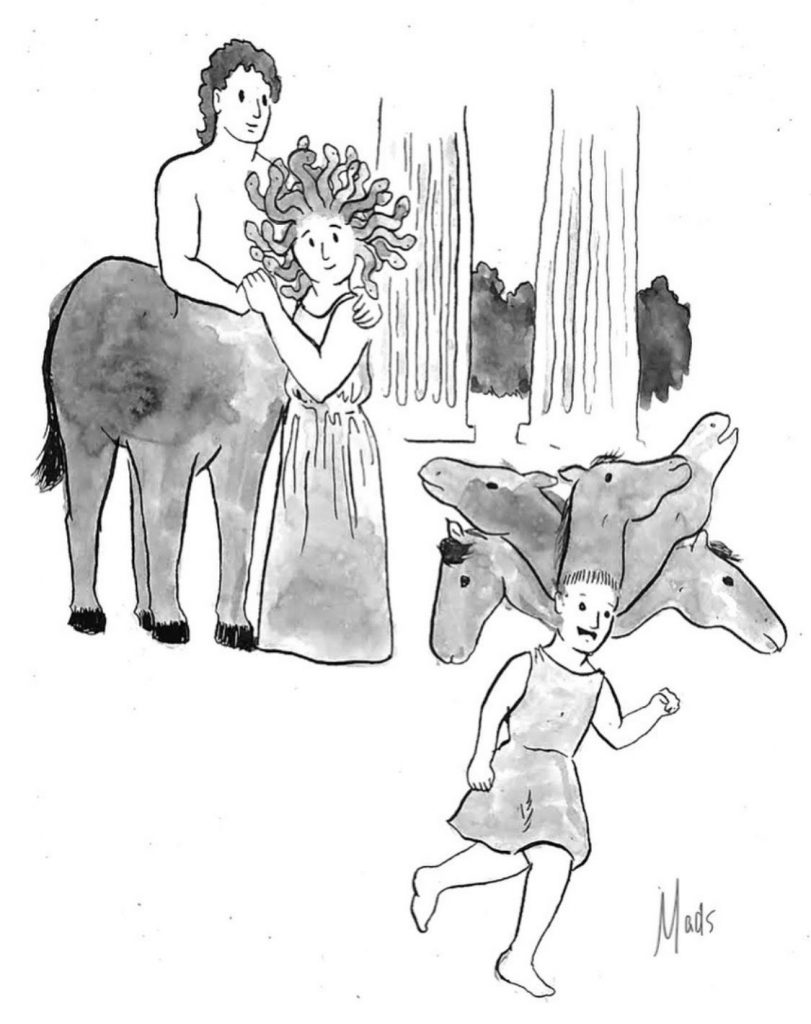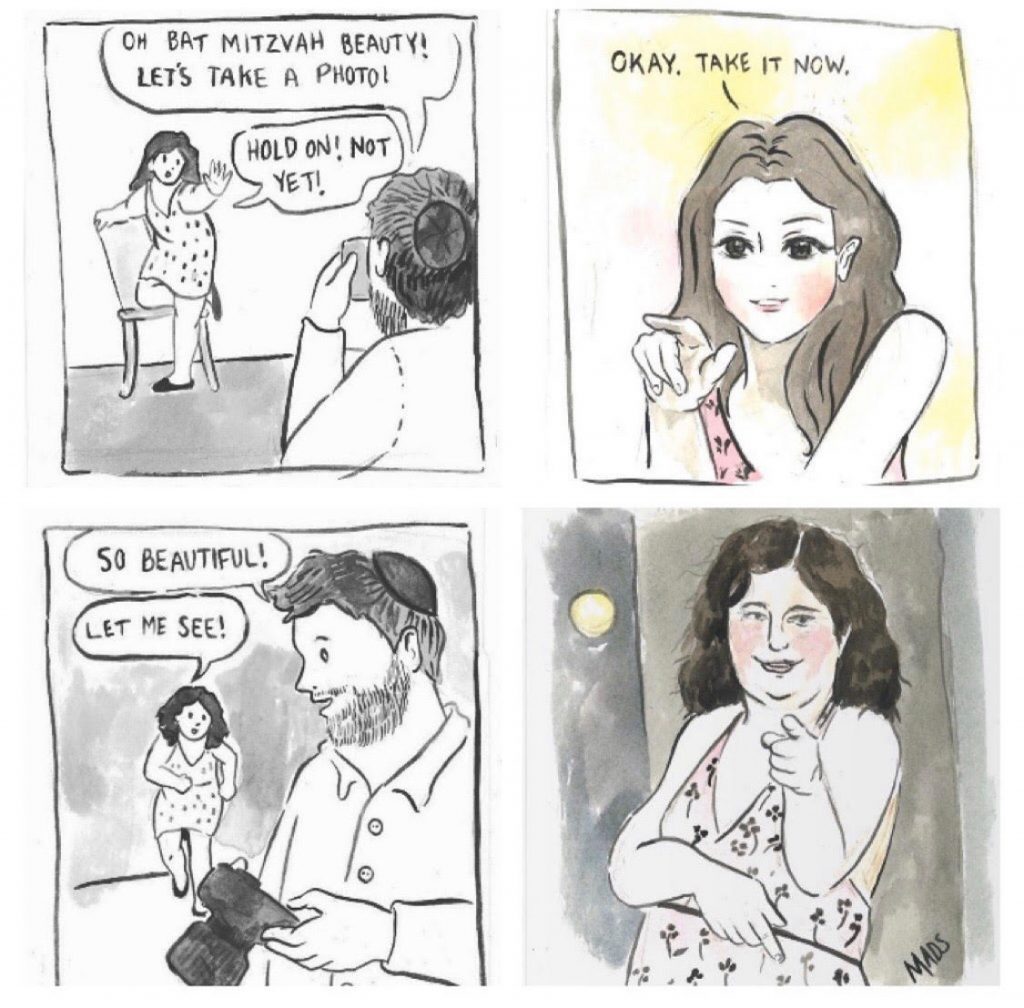
Madeline Horwath wants you to know they are not a horse girl. It may seem that way, given how their journey towards becoming a New Yorker cartoonist began, but they want to assure you: they are not a horse girl.
“One day in art class we learned how to draw a horse and because I was drawing so many horses my mom thought I was a horse girl just like her,” says Horwath, commenting on the first image she would rework to perfection, “She put me in horse camp, bought me toy horses, and really pushed horses on me. I had to put a stop to it by the time I was 12 years old.”
Horwath is a 28-year-old artist living in Chicago, Illinois. Originally from Fairfax, Virginia, the cartoonist got their start early, with parents who enlisted them in night school art classes at five years old. The time the artist invested in their practice paid off, they took advanced placement art classes throughout most of their childhood, culminating into an AP course their senior year. Eventually, they went on to pursue a fine arts degree where their focus was, ironically, cartooning.
“That wasn’t a pursuit in my alma matter so I had to figure out how to make it my pursuit and when I graduated I said fuck this I’m never making another comic,” said Horwath. “Now I’m here.”

Horwath’s background despising the form they have now mastered is amusing, considering their recent achievements. Having sold several comics to the New Yorker, the Chicago cartoonist has risen in ranks over the past two years selling multifaceted content. After someone pointed out their sense of humor fit the New Yorker’s, they flew to Manhattan to test their hand diving into a field where few succeed.
“I bought a plane ticket to New York for a day, managed to miraculously get a meeting with the humor editor, who gave me notes on my pieces, and a couple weeks later I sold my first cartoon,” says Horwath on the surreal experience. “I’m underestimated because I’m kind of a weirdo who’s socially inept and once I saw my name in the New Yorker I realized I’ve got this.”
Expressing discomfort with femininity from an early age, their journey towards self-discovery relied on reconciliation with how they see themselves both in, and outside, of their work. Growing up obese in the early 2000’s during a time when low rise jeans and Paris Hilton dominated pop culture was not necessarily great on the artist’s self-image. Horwath says these feelings of discomfort in dresses and unease with the social trends of the time budded from gender dysphoria. They began exploring gender and sexual identity in pieces centered on the body and the manipulation of it, finding solace in changing their representation of their self-image.
“I had to present how I draw myself and eventually I realized I could look how I wanted,” said Horwath. “I got to have broader shoulders and not have makeup on that I’d just wipe off in the bathroom. I started drawing how I felt about myself and my physical appearance eventually caught up to that.”
Horwath admits, growing up isolated and growing into the DIY community of Chicago was difficult, but not impossible, for somebody who’s not outspoken. Eventually, they found peace outside the traditional expectations of comedy after realizing standup wasn’t for them, pivoting from standup to cartooning. Their unique humor, such as sculpting severed toes out of clay to send to loved ones, blossomed from an appreciation of sad, scary material and melodramatic Italian Operas, a macabre through and through.

“When I was 9, I put a cross in this patch of dirt near the playground and wrote that the end is coming, which made all the kids cry,” says Horwath “I had such a morbid curiosity as a kid, that’s where I got my comedy influence.”
Their fascination with horror manifests in queer content, something they’ve found is a mutual fascination within the LGBTQ community. Alternative comics find solace in alternative content typically considered avant-garde or underground. Horwath believes their nontraditional approach to the medium, using camp as a means of expression, is some of the reason their work appeals to a predominantly queer crowd.
“Something I’ve noticed, it’s subtle but, I’ve been able to connect more with queer people through the horrifying style of my art,” says Horwath. “I’m not saying queers like cursed images but somehow I find an audience, young and old, through a lot of cursed comedic imagery.”
Horwath’s face lights up when they talk about the progression of comics in the queer community. Looking up to alternative art like Dykes to Watch Out For and Laura Dean Keeps Breaking Up With Me, they’ve noticed how personal narrative can be expounded in an abstract way through cartooning, storytelling, and graphic novels. Achieving personal success was always tied to their ability to accept parts of themselves that were unique, gender and sexuality included. Art is about discovery and Horwath’s journey, professionally and personally, has never been linear.
“I had a mental breakdown, I lost my insurance, comedy was leaving me very depressed, so I knew I had to quit and focus on myself,” says Horwath. “When my identity seems twisted and off because of things like gender, it’s because the world seems twisted and off. I’m always trying to figure out if there is a reason I don’t fit in my art.”
Making sense of the world and their position in it is something Horwath often strives for. Outside of cartooning for the New Yorker, Chicago Reader, Weekly Humorist, and Shag Mag, the artist hosts several side projects raising money for queer POC homes, environmental causes, BLM, and, most recently, Lebanese disaster relief. For them, it’s a compulsion, something that comes from a desperate need to do good. They recognize the comfort their position in life gives them, and, above all else, they seek to help through whatever means necessary, whether that’s cool stickers or creating art others can see themselves in.

“I have this opportunity to help other people and I’m doing what I now realize is my dream career,” says Horwath. “It’s not fair I get to sit here and do my dream career and other people can’t have a regular life.”
Horwath plucks at the AstroTurf we’re on and comes up empty-handed. The grass is not real but the artist is: a down-to-earth, kind individual who is patient with me being lost for most of our conversation. I ask multiple times for them to explain jokes I don’t understand, a high brow level of intellect that makes you realize how unbelievably smart people can be and they do so with ease, laughing at Hellenistic statues I’ve never heard of. Their art, much like their personality, invites you into a world unfolding in brush strokes, humor, and heart. Their style is never condescending but kind, a person you want to be around when you’re lost at a party with no one to talk to. Maybe they aren’t the cool kid, but maybe they’re something more complete.
“I didn’t realize I was building a career in cartooning this whole time, living through experiences that expanded my worldview and voice,” says Horwath. “It’s not a race to accomplish this as young as possible. No one’s going to judge your art by your age.”
SOLRAD is made possible by the generous donations of readers like you. Support our Patreon campaign, or make a tax-deductible donation to our publisher, Fieldmouse Press, today.

Leave a Reply